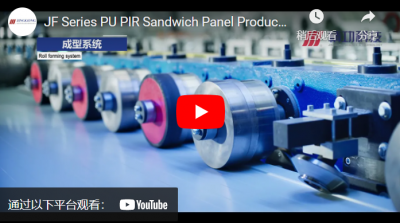Influencing Factors and Prospects of Polyurethane Rigid Foam Materials and Product Properties
1. Fire protection standards for materials and products
(1) The addition of the oxygen index is to strengthen the supervision of construction sites.
(2) It is more difficult for polyurethane rigid foam to reach level B1 than EPS, it is technically difficult and costly.
(3) Even if the other indicators of polyurethane rigid foam meet the B1 parameter requirements, if the oxygen index does not reach 30, the B1 report cannot be obtained.
Only emphasizing the combustion performance level of the core material will hinder the use of polyurethane rigid foam composite products
The characteristics of self-adhesiveness and continuous foaming of polyurethane rigid foam make it easy to directly compound with various materials. The following composite materials can reduce the risk of fire and improve fire safety at construction sites.
2. Fire protection standards for building structures and systems
The thin plastering insulation system (without partition) of the PU and PS wall that both are at the B1 level, has been verified by model fire experiments. And it has proved that in actual fires, fire safety is very different and should be treated differently.

PU at the level B1 PS at the level B1


The 7 images above show the experiment process:
(1) Ignition
(2) 10min later, thermal insulation materials between Line 1 and Line 2 burnt
(3) 15min later, the burning was the most violent, and the protective layer of the main wall burned through, and an open flame appeared under the protective layer of the auxiliary wall
(4) 20min later, the fire became smaller and the burn-through area of the combustion chamber expanded
(5) 30min later, both the fire source and the wall lost their combustion power, and the drippings were in the collapsed area
(6) The appearance of the experiment wall after 1-hour burning
(7) The state of the experiment wall after removing the burning area
Thin plaster-PIR50MM28% without fire barrier- class C (B1?)

Thin plaster-spraying PU60MM without fire barrier 26% - class E (B2)

Thin plaster-PU6OMM 26% with fire barrier - class D (B2)

The fireproof performance of polyurethane rigid foam external wall insulation system is better than EPS
Polyurethane rigid foam and phenolic thermosetting foam can pass the experiment without a fire barrier
● The fireproof performance of polyurethane rigid foam color steel sandwich panel is better than EPS color steel sandwich panel
B1 polyurethane rigid foam color steel sandwich panel building can still maintain structural integrity after the end of the test, and there is no obvious fire hazard; class B1 polystyrene color steel sandwich panel building has full combustion, which is of a great fire hazard; Although the B2 polyurethane rigid foam color steel sandwich panel building has a short-term burning phenomenon, it can maintain the integrity of the test room during the entire test process, and there is no possibility of spreading to the outside. That is to say: even it is the B2 grade polyurethane rigid foam color steel sandwich panel, its structure and fire safety is better than that of class B1 EPS.
The color steel sandwich panel fires in our country in the past were caused by EPS thermoplastic materials (usually class B3) that melted and dropped off, which could not maintain the stability of the structure, and then collapsed and caused major losses. This conclusion has been fully verified in the experiment.
3. Fire protection regulation
What kind of building insulation system fire performance is safe?
● During use: the fire safety of the system - model fire test verification
● During the construction process: the risk of burning and spreading of the material - management + burning performance of the material
Other concerns:
● Encourage the use of self-insulation and internal insulation;
● Internal insulation should use low-smoke and low-toxic insulation materials;
● When non-load-bearing exterior walls, room partition walls and roof slabs in factory buildings and warehouses are required to use metal sandwich panels, their core materials should be non-combustible materials, and their fire resistance limits should comply with the relevant provisions of the regulation. This is what the polyurethane sandwich panel production line should consider.
● For non-load-bearing exterior walls, room partition walls and roof panels in civil buildings, when metal sandwich panels are really required, their core materials should be non-combustible materials, and the fire resistance limit should comply with the relevant provisions of the regulation.
● When internal thermal insulation is used in cold storage and low-temperature environment production sites, the combustion performance of the thermal insulation should not be lower than class B1, and the surface of the thermal insulation should use non-combustible materials as a protective layer.
Limit the use of B2 and encourage the use of B1: polyurethane rigid foam to further increase the technical difficulty and cost
First, use class B1, and B2 materials, you must use class C fire windows with fire-resistance integrity greater than 0.5 hours - The cost is significantly higher than that of inorganic materials.
For metal sandwich panels - Class A insulation materials are required to be used. External walls, internal partition walls, and roof panels are completely prohibited
4. The prospect of rigid polyurethane foam construction products
(1) The oxygen index value should be differentiated for different materials. It is recommended to list the comparison relationship between the oxygen index and the combustion performance level of the material in the appendix when revising.
(2) The inspection should be carried out according to the actual state of the insulation material entering the construction site, such as composite material, thickness, density, etc.
(3) Polyurethane rigid foam has excellent thermal insulation and building applicability, and its system structure has excellent fire resistance. In foreign countries, the polyurethane rigid foam building insulation system has achieved good results. We hope that our country's polyurethane industry can cooperate more closely with the construction field to provide more options for construction energy-saving technology.
Promote the improvement of 75% energy-saving standards, reflecting the advantages of good insulation performance of rigid polyurethane foam.
Promote the scientific rationalization of building fire protection standards.
Our PU sandwich panel line and PU sandwich panel machine are equipped with cutting-edge technology, enabling precise control over panel dimensions, thickness, and density. You can customize panel specifications to meet your project requirements and achieve optimal energy efficiency.
At Jinggong, we prioritize durability and reliability, ensuring that our equipment operates seamlessly with minimal downtime. Our sandwich panel line is designed for high-speed production, enabling you to meet demanding production schedules and maximize output.


 CN
CN
 EN
EN
 fr
fr  de
de  es
es  it
it  ru
ru  pt
pt  ar
ar  th
th  pl
pl  ro
ro 













 Call us on:
Call us on:  Email Us:
Email Us:  #1809, Jianhu Rd, Keqiao, Shaoxing, Zhejiang, China
#1809, Jianhu Rd, Keqiao, Shaoxing, Zhejiang, China 